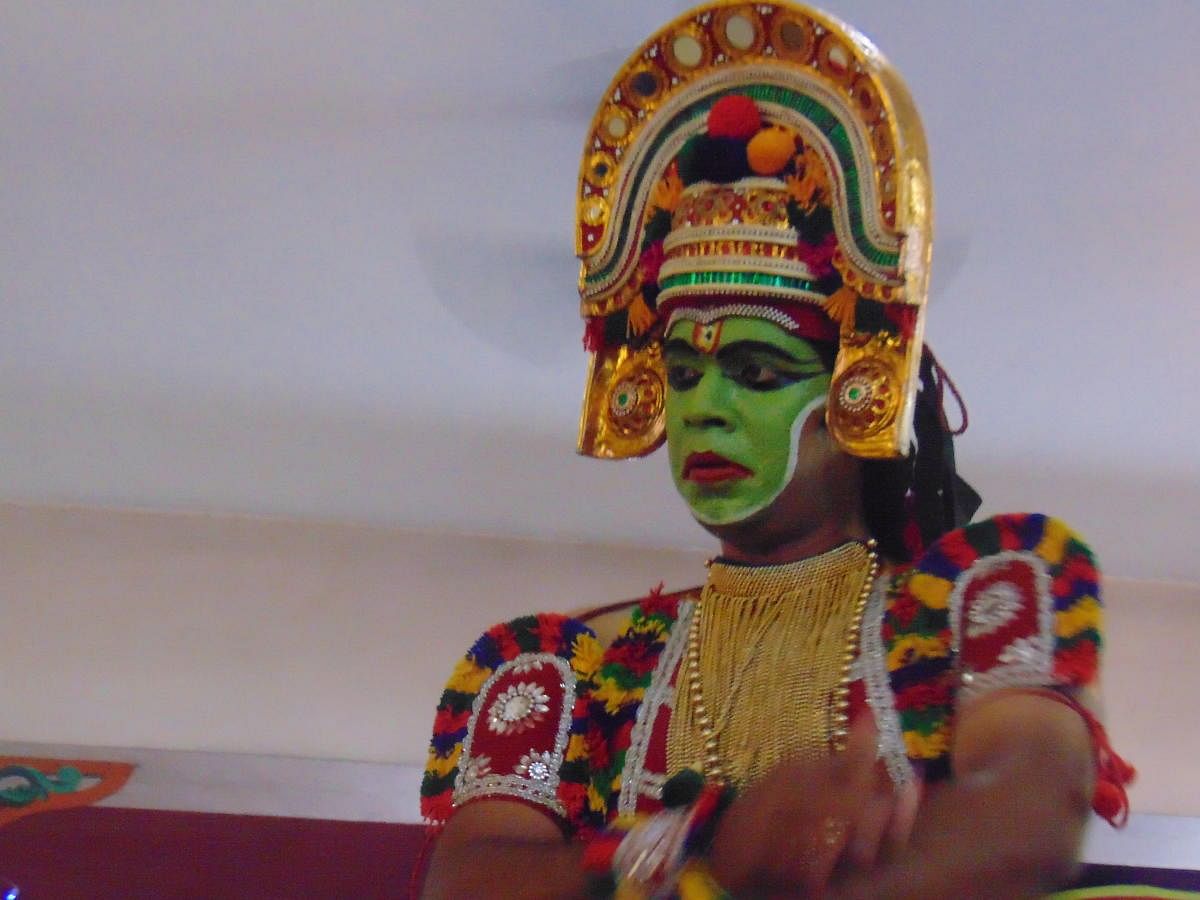
When the last bit of the green paint has been dabbed on the face and the eye highlighted in black, the heavy wooden headgear fitted, the strips of cloth strung around the waist and the anklet tied, the transformation is complete. Not only in looks but the artiste too goes through a complete makeover from a 21st century civil engineer to an 18th century song-and-dance performer. Call it instant teleportation sans AI.
Young Rahul Nambeesan earns his bread and butter studying the load-bearing aspects of modern day buildings, roads and canals, but the creative expression of the artiste within unfolds on stage when he dons the costume and plays the traditional Ottamthullal. This was something he picked up initially by watching the maestro, the late Kalamandalam Geethanandan on CD!
The art form from Kerala can be traced back to the 18th century when Kunjan Nambiar, the poet, fell asleep playing the drums at a Chakyarkooth (another satirical art form) and was ridiculed by the main player. In response, he is believed to have developed overnight the Ottamthullal as an alternative performance. Despite being banned by the king from playing it, Nambiar managed to popularise the art form, which is then believed to have rivalled Chakyaarkooth and even Kathakali, given its usage of simple language and humour that appealed to people. There are believed to be around 64 stories written by Nambiar for Ottamthullal. Many of these arise from mythology and some are social parodies that lampoon prevailing bad practices in society.
Humour is necessary
The Ottamthullal bug bit Rahul way back in 2006 when he was a Class 7 student. There has been no going back. It has been ten years since then and over 125 performances. On stage, he gets into the skin of the Pandava Bhima lampooned as an arrogant oaf strutting through the forest in search of the rare flower Kalyanasougandeekam. He deftly switches from the oaf to the monkey god Hanuman and back again, all the while leaping and prancing around the stage, singing and emoting.
With attention spans waning, it is indeed tough to keep an audience engaged for very long, he says, and adds that stories with a dash of humour are more sought after. That is where the monkey god comes in useful! Scratching a leg, pulling a lice out, or simply making a face at a person in the audience, the actor engages the crowd. “Hanuman is my favourite character and god,” says Rahul, “and of course Krishna.”
Solo act
Unlike Kathakali which is rigorous, especially with the mudras and eye movements, Ottamthullal, as the term means, is a ‘run and leap’ form of dance, with a lot of scope for individual innovation, says Rahul. “You need to have some basic awareness of the rhythm and the song notes in Ottamthullal. You also have a lot of free movement.” Being trained in mridungam helped him get into the groove.
Perhaps it is the combination of the four forms of expression or abhinaya — vachika (oral), angika (limbs), aharya (costumes) and satvika (facial) — that accounts for the appeal of this art form over many others. The performer not only moves around and gesticulates, but also sings (and sometimes shouts out) and emotes facially. Unlike Kathakali, Ottamthullal is essentially a solo performance, making it that much more challenging.
In Kerala, many youngsters are flocking to learn it, unlike Kathakali, says Rahul's guru, veteran performer Kalamandalam Parameswaran, noting that there are more girls than boys taking up Ottamthullal.
Today, the dance form is also being used to convey social messages. Rahul though is clear that he cannot take it up as a profession till he has more exposure and experience. “But this I know, I will not give up Ottamthullal. It is my inner calling.”